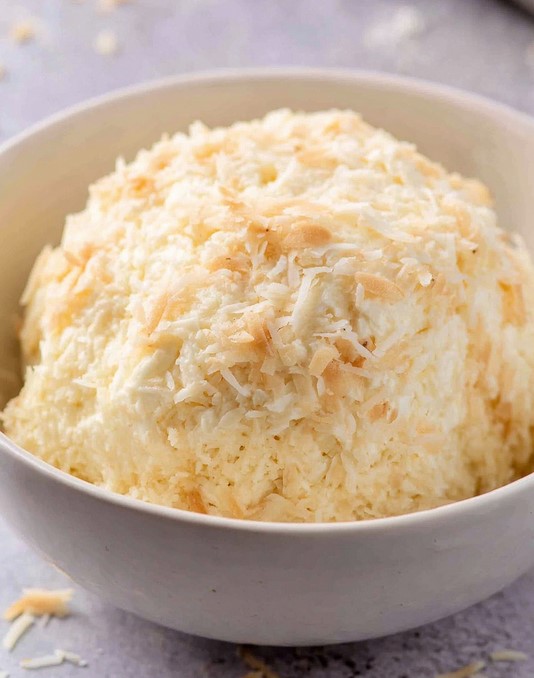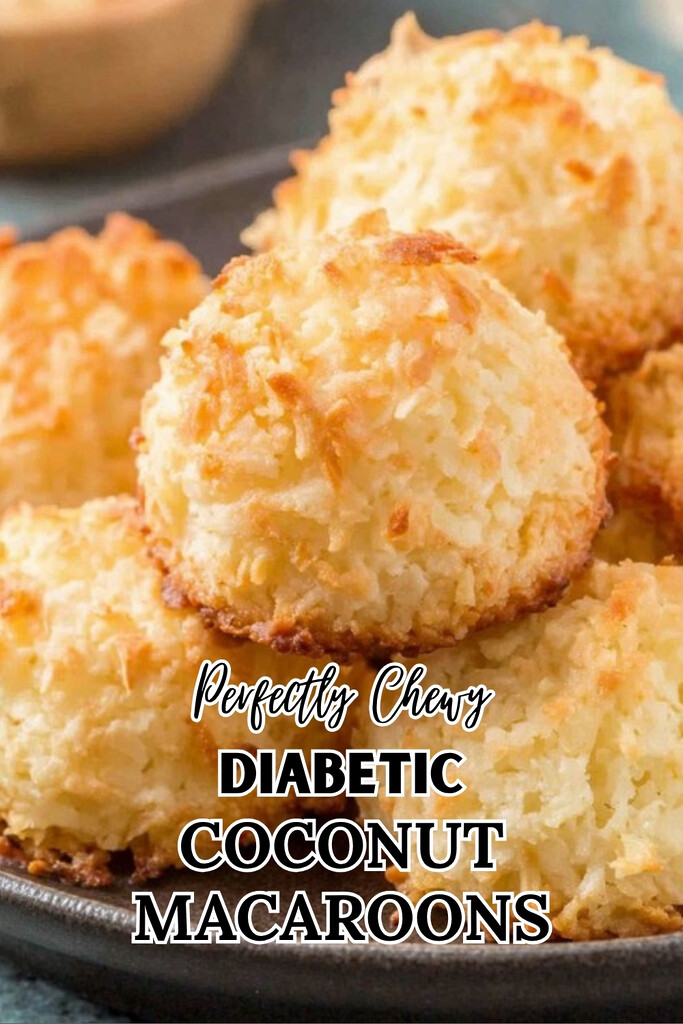One of the first questions I get from readers (and one I asked myself years ago!) is, “What can I possibly eat for dessert?” When you’re managing your blood sugar, it’s so easy to feel like all the joy has been zapped from food. That all the cookies, cakes, and sweet treats are off-limits forever.
I’m here to tell you that is absolutely not true. You just need better recipes.
These easy, chewy diabetic coconut macaroons are the perfect example. They feel like a rich, decadent bakery treat, but they’re packed with healthy fats and fiber, so they won’t send your glucose on a rollercoaster. This is one of my favorite diabetic dessert recipes to prove that eating well is a joy, not a punishment.

Why Are These Macaroons So Blood-Sugar-Friendly?
It all comes down to swapping out the two big problem-causers in traditional cookies: white flour and sugar.
Coconut is the Star This recipe uses unsweetened shredded coconut as its base. Coconut is amazing! It’s packed with healthy fats and, most importantly, dietary fiber. That fiber is key to slowing down digestion and preventing a big blood sugar spike. This directly answers the question, is coconut a good snack for diabetics? Yes, in its unsweetened form, it’s fantastic.
Smarter Sweetness We use a granulated monk fruit/erythritol blend. This is a zero-glycemic sweetener, meaning it tastes sweet but doesn’t impact your glucose levels. It’s the best way to get that cookie-like satisfaction without the consequence.
No Flour, No Problem There’s zero white flour here, which makes these easy diabetic coconut cookies naturally gluten-free and very low in processed carbs. The structure comes from the coconut and the egg whites alone.
How Do I Get That Perfect Chewy-Crisp Texture?
The secret to that perfect bakery macaroon—chewy on the inside, golden and crisp on the outside—is all in the egg whites.
- Use Room Temperature Egg Whites: This is my number one tip! They whip up much faster and create a more stable, airy meringue. This is what gives the macaroons their light-yet-chewy structure.
- Beat to Stiff Peaks: Don’t stop when the eggs are just foamy. You want “stiff peaks,” which means when you lift the beaters out, the peak of meringue holds its shape and doesn’t flop over.
- Fold Gently: When you add the coconut mixture, don’t stir or beat it! Use a spatula to fold it in. This keeps all that air you just whipped into the eggs, ensuring a light cookie.
- Let Them Cool Completely: They will seem a bit soft right out of the oven. You must let them cool completely on the baking sheet and then a wire rack. This is when they “set up” and get that perfect crisp exterior.

Common Questions About These Cookies
1.So, can diabetics eat coconut macaroons?
They can absolutely eat these diabetic coconut macaroons! Traditional macaroons from a store are loaded with sugar and sometimes sweetened condensed milk, which are terrible for blood sugar. This recipe was designed specifically to be a safe, delicious treat.
2.What cookies are safe for diabetics?
This is such a great question! The safest cookies are ones, like these, that are based on low-glycemic ingredients. Look for recipes that use almond flour or coconut flour instead of white flour, and are sweetened with a zero-calorie sweetener like monk fruit, allulose, or erythritol.
3.How do I store these macaroons?
Store them in an airtight container at room temperature for up to 5 days. Unlike traditional cookies, I find they get even chewier and more delicious on day two!
Here is the simple, one-bowl recipe you’ve been waiting for.
Easy Almond-Kissed Coconut Macaroons
Ingredients
- 2 1/4 cups approx. 202g unsweetened shredded coconut
- 1/4 cup approx. 28g slivered almonds
- 1 tbsp approx. 7g ground flaxseed meal
- 4 large egg whites room temperature
- 3 tbsp approx. 36g granulated monk fruit/erythritol sweetener blend
- 1/2 tsp vanilla extract
- 1/4 tsp almond extract
- 1/8 tsp salt
Instructions
- Prepare Oven and Ingredients: Preheat your oven to 350°F (180°C). Line a large baking sheet with parchment paper. In your large mixing bowl, combine the shredded coconut, slivered almonds, and ground flaxseed meal; set it aside for a moment.
- Create the Meringue Base: In a separate, clean large mixing bowl (or using a stand mixer), add the room-temperature egg whites, granulated sweetener, vanilla extract, almond extract, and salt. Using an electric mixer, beat the mixture on high speed for 2-3 minutes, or until stiff, glossy peaks form (when you lift the beaters, the peak should hold its shape).
- Fold and Form: Add the dry coconut-almond mixture directly into the bowl with the stiff egg whites. Using a spatula, gently fold the coconut mixture into the meringue until it is just combined. Be careful not to deflate the egg whites.
- Bake the Macaroons: Using a small cookie scoop (about 1.5 tablespoons), drop rounded portions of the batter onto the prepared parchment-lined sheet, about 1-2 inches apart. Bake for 12-14 minutes, or until the edges and tops are golden brown.
- Cool Completely: Remove the baking sheet from the oven. Let the macaroons cool on the baking sheet for 5-10 minutes before transferring them to a wire rack to cool completely. They will crisp up as they cool.
Notes
See? You absolutely can have rich, satisfying desserts while managing your blood sugar. It’s all about having the right recipes in your toolbox.
These diabetic coconut macaroons are proof that you don’t have to feel deprived. I hope they bring a little joy to your kitchen!
If you loved this recipe, I know you’ll also enjoy my Sugar-Free Almond Flour Brownies next!

Kristina Hanson is an independent wellness researcher and the founder of DailyZests. After a PCOS diagnosis, she focused her research on managing insulin resistance through evidence-based nutrition. Her work translates the science of DASH, Mediterranean, and Low-Carb eating into easy, family-tested recipes.


